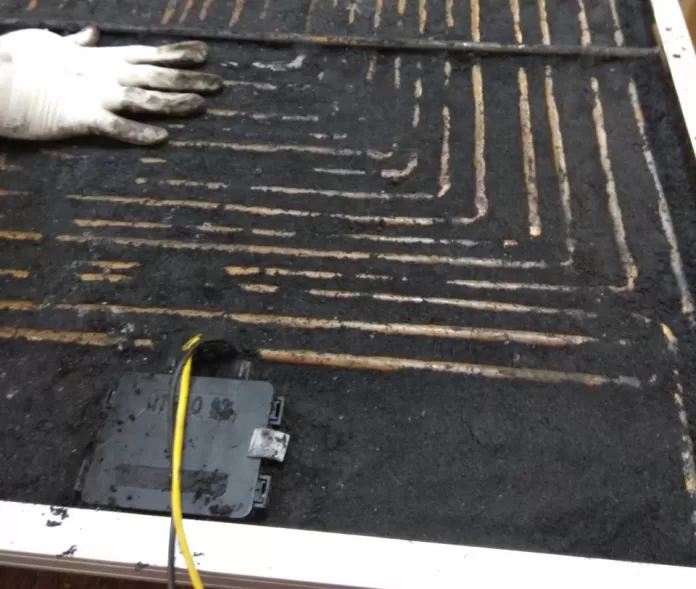Scientists at the Indian Institute of Technology Guwahati have made a photovoltaic-thermal (PV) module that is said to have an overall efficiency of 79.6%.
Dudul Das, a researcher, told pv magazine that the water-based system makes hot water that is hot enough to be used in homes. “The average electrical and thermal efficiencies of the PVT system with a new form-stable thermal energy storage material are said to be 13% and 66.6%, respectively.”
The system was made with a 100 W solar panel from India’s Central Electronics, an absorber made of copper tubes with a diameter of 7.9 mm, and a cooling system made from a PCM made from biochar made from water hyacinth, an aquatic weed that grows in Southeast Asia and South America.
They used an epoxy glue with a thermal conductivity of 0.14 W per millikelvin to stick the tube assembly to the back of the PV panel (mK).
“A 10 mm layer of PCM-biochar composite is put in after the tube assembly has been attached to the PV surface,” the scientists said. “The composite is put in from one corner and filled up diagonally.”
Then, they insulated the panel with a polyethylene foam sheet and put a plexiglass back cover on it to keep water, dust, and wind from getting into the system. They used a field emission-scanning electron microscope to look at the surface morphologies, X-ray powder diffraction (XRD) to look at crystallinity and identify phase changes, and a thermal conductivity metre to look at how well the composite material transfers heat.
When tested in the open air with a tilt of 26 degrees, the panel’s thermal efficiency was better.
“The thermal output of the PVT system has been successfully controlled by using the form-stable PCM-biochar composite,” the academics said. “The thermal efficiency stays close to 50% even when solar radiation goes down. Without PCM, it drops to 38%.”
They found that the panel’s thermal efficiency ranged from 60.3% to a maximum of 71.2%, and that its electrical output was 18.4% higher than a reference PV panel without the thermal unit.
“Adding water hyacinth biochar as a supporting matrix increases the thermal conductivity of the PCM by up to 1.55 times,” the scientists said. “Adding aluminium metal powder makes the material 1.66 times better at transferring heat than PCM alone.”
The research group first talked about the system in “Performance investigation of a rectangular spiral flow PV/T collector with a novel form-stable composite material,” which was published in January 2021 in Applied Thermal Engineering.
“The work has shown that the difference in electrical output between a PVT system with PCM bio-composite and a PV system during the sunniest part of the day can be as high as 18 W,” said Das. He also said that a simplified economic analysis of the system shows that its internal rate of return is 28%, with a levelized cost of energy of $0.05/kWh.





